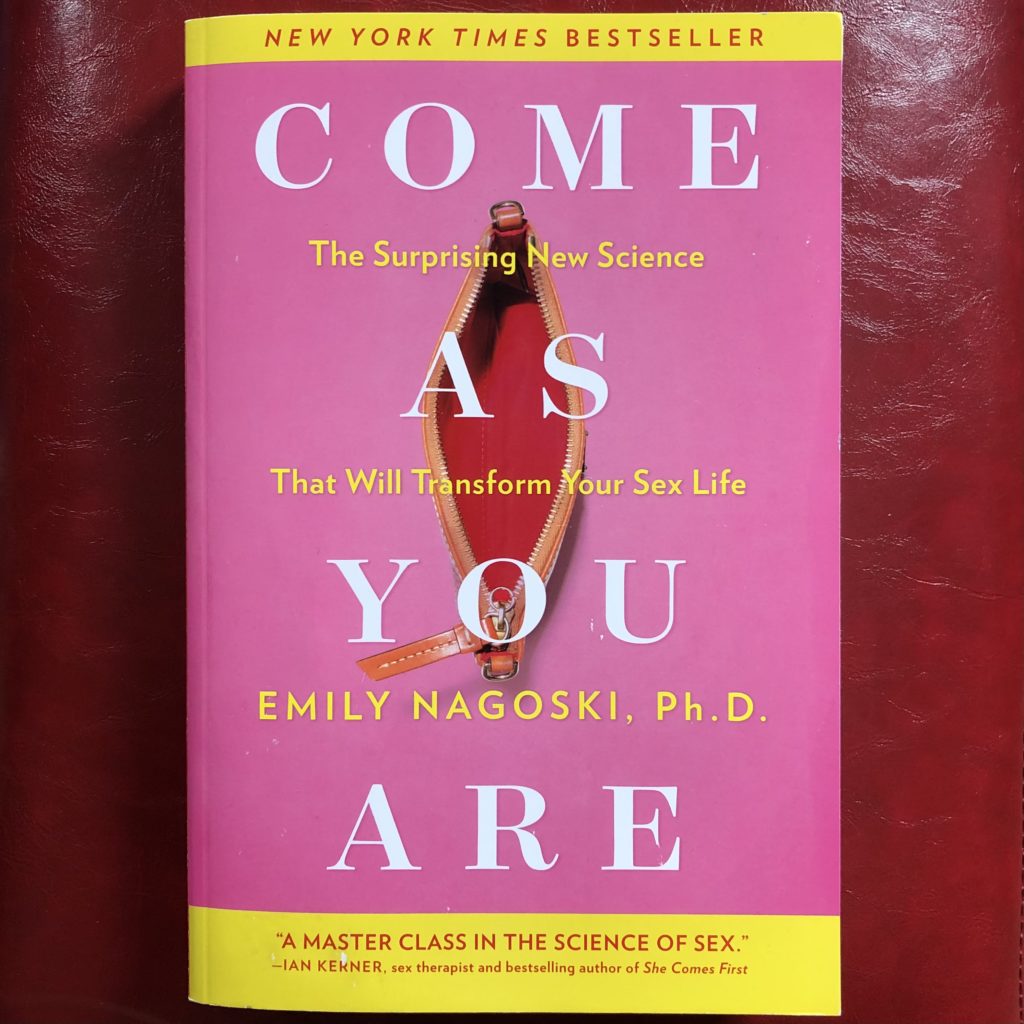I’ve been really excited about Come as You Are, by Emily Nagoski.
I finished reading it in a month, and though I could’ve done it faster, I wanted to take my time underlining specific points and really taking it all in.
It’s quite dense and information heavy, but also written in a way that makes it easy to follow and honestly hella funny. My breakdown is as follows.
Come as You Are is like a textbook for sex ed meets psych 101.

It combines the biological explanations of what occurs in the female body with scientific studies and actual stories from real life patients.
Emily is a researcher, sex educator, counselor, and professor with an emphasis on stress and sex, particularly with how they play into each other.
She explores the differences between spontaneous and responsive desire, the accelerator and brakes we each possess that turn us on or off, and the context we must create to allow these sensations to grow appropriately. I learned so much about not just how sex works for females, but also how it works for me.
As someone who’s seen two sex therapists, I had some semblance of the way my body works in tandem with men I’m getting intimate with, but I’m also used to viewing it in terms of conquering vaginismus.
It was refreshing to take a step back and assess how my body functions in terms of purely what excites me and what doesn’t, how to use that to my advantage, and how to better mesh with a partner whose body may function the opposite way that mine does.
The theme of Come as You Are is “we are all made up of the same parts, just organized differently.” The overarching message Emily wants to get across is that we are all normal, no matter how weird you think your body or preferences are.
The book is feminist in nature as she assures us that society is wrong for teaching us to feel ashamed and yet expecting us to naturally switch into a full blown pleasing wife after marriage. Some of my favorite quotes are:
“Suffering is not a virtue and pleasure is not a sin. We’ve been lied to all our lives.”
“Notice that the Ideal Sexual Woman does not necessarily enjoy a great deal of pleasure; she just appears to experience pleasure. That’s what a sexual woman should be, as far as my culture had taught me.”
“When you notice yourself feeling dissatisfied with your sexuality, when you notice shame or frustration or grief, allow yourself to direct those feelings away from yourself and instead focus the emotions toward the culture that told you the wrong story.”
I love how Emily starts by explaining the body’s development and then builds off of each concept she introduces in the following chapter.
She also references back to previous explanations to help you make the connection when she introduces new topics. You should read this book if for no other reason than to learn what happens when rats listen to Iggy Pop, haha.
The part of the book that I disagreed with, purely from the perspective of someone battling vaginismus, is whenshe described letting go of thoughts like “I shouldn’t be this way” and “I wish my sexuality were different.” She says it’s a type of failure you require to come to terms with not achieving the sexual identity you expected to have. I think this mindset can be harmful when you are trying to better your situation by educating and training yourself for more enjoyable/less painful sex, because you don’t want to let go of your goals.
It’s important to maintain a belief that you can change and achieve the life you desire if you put your mind to it.
When I had a guy tell me I needed to accept how uncomfortable penetration made me and do without it I told him to get out. If he could see me now…
This book has lots of advice for monogamous couples who’ve been together for years and need a lesson in how to reignite the fire, but I truly think anyone, male, female, non-binary, can benefit from reading it. There are lessons to be learned and science to be explored as we strive to create a world where women’s health matters and deserves research.
Encourage the spread of this information by purchasing this book today, reading it, and sharing it to continue to spread the good word.
– Krista (33 years old, Houston, USA)
P.S. I invite you to check out my blog Chronicles Of A Broken Body.




